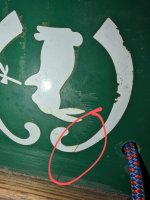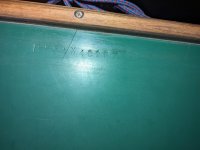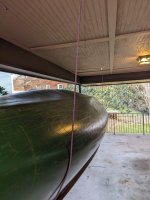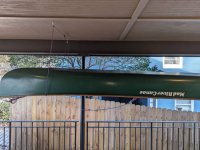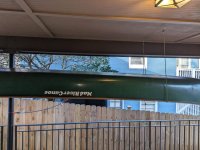This is for the benefit (hopefully) of the OP who is trying to decide whether or not to purchase the canoe. Repairing cold cracks is not difficult if you have some patience and a little time. Although some back up their repair with an internal patch of fiberglass or some other fabric, I have never done so and I have never had a cold crack repair fail, but it an option. As for cold cracks recurring after repair, cold cracks might occur in any Royalex canoe with wooden gunwales whether the canoe has ever suffered one or not.
Here is an article which might be helpful to read through:
cold crack repair in Royalex canoes
And here is an old thread describing different canoe owners' methods of repairing them, including mine:
I am once again dealing with fixing cold cracks in a free boat, Mad River ME and I have a Mad River Explorer, free, coming to me with cold cracks. I have fixed these in the past and know how to do it the way I do it but would like to hear from others of the steps they went through to bond the...
www.canoetripping.net
Ideally, you would like to be able to remove enough gunwale screws to lift the gunwale up above the sheer of the canoe to fully expose the crack. Sometimes that is easy but often it is not. If you have a stubborn gunwale or deck plate screw, sometimes heating the head of the screw with a soldering iron will help loosen it. If you cannot free the gunwale, you can still repair the crack. To do so you need to widen the crack a bit to allow epoxy to penetrate the crack to its depth from both sides. This can be done by drilling holes close together through the crack to open it up over about an inch or so, just wide enough to get a bare hacksaw blade into it which can then be run up and down the length of the crack.
As for epoxy I would recommend you buy this kit:
G Flex 650-K
Don't be taken aback by the "Aluminum Boat Repair Kit" title. The reason this kit is good is that it contains not only enough G Flex to to the repair but also some silica powder that you can use to thicken the epoxy to fill the crack. You just add the powder to the mixed epoxy before you apply it to thicken it as much as you like. If you choose to back up the repair with a fiberglass patch, you want to use unthickened epoxy to lay down the cloth. The kit also contains a couple of dental syringes, useful for injecting epoxy into cracks and tight spots, some mixing cups and a stir stick/spatula.
In addition you will need some extraneous items and tools. A rotary tool like a Dremel is very helpful for guttering out the cracks but you can also do the same using coarse sandpaper and/or a triangular scraper tool. You might need to buy a hacksaw blade. And you will need to have on hand disposable gloves, paper towels, some denatured alcohol to clean off the boat, sandpaper, some masking tape. And after the epoxy cures you will want to paint it on both the interior and exterior with any type of paint that comes closest to matching the color of the canoe. Obviously, you won't need much paint. You will need some type of tape to back up the crack on one side to hold the epoxy as you fill the crack from the other side. I use clear packing tape for this purpose. And if you feel the need to back up the repair with a patch, you will need to add in the cost of a little fiberglass fabric. A few square feet of E fiberglass (6 ounce/square yard) weight won't cost too much.
So you can estimate the material expenses needed to repair the cracks based on what you have and do not have. I would ask the seller to deduct that estimate from the asking price. As a rough estimate figure on around $150 or so to fix the cracks.
 www.facebook.com
www.facebook.com
 www.facebook.com
www.facebook.com

